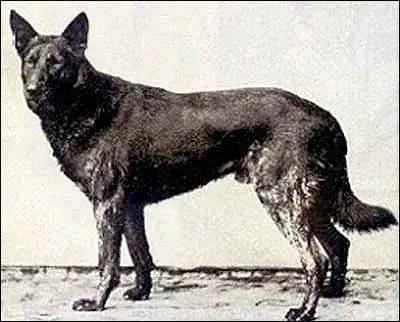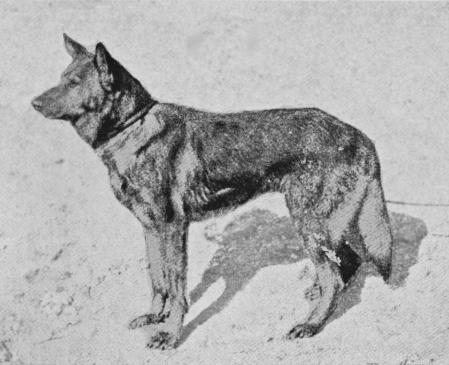Liesje
Posted : 2/12/2008 2:08:32 PM
HoundMusic
Yikes! LOL! I was also thinking JRT :) I kinda prefer the look of the older bull terriers, but something about the modern look makes the breed so distinct & lovable ... It's always amazing to see how breeds progressed, sometimes for the better, other times, not so great :( My great Aunt used to breed GSDs, she started in the 1930s and had her last litter in the mid 70s. These are two of her first Shepherds:

Neat pic!!
You know what kills me? There are these ridiculous breeders that breed so-called "old style German Shepherds". Their dogs are fat, coated, way out of standard, usually 100-130lbs, not titled, and not suitable for any form of sport or work.
Now if only they would do some simple research and see what an "old style" GSD really looks like! After all, the breed is less than 150 years old.
Beowulf

Beowulf was V-rated, SchIII (highest), and KKl breed survey (highest). Interesting how much resemblance there is to Dutch Shepherds (and the brindling).
Horan von Grafrath, 1895

Again, ironically Max Stephanitz, founder of the breed, called him "big
for that period, between 24" and 24 1/2", even for the present day a
good medium size, with powerful frame, beautiful lines, and a nobly
formed head. Clean and sinewy in build, the entire dog was one live
wire. His character was on a par with his exterior qualities; marvelous
in his obedient fidelity to his master, and above all else, the
straightforward nature of a gentleman with a boundless zest for living."
One thing I kinda like about Kenya is her small frame and finer bone that remind me more of "old" German Shepherd dogs, though she does have the bigger ears and deeper chest of the modern dogs (she is west German working lines, some DDR, and some old Kirschental show/herding lines). She has a level back and "poor" (by today's standards) rear angulation. Most of the compliments I get for her come from old men. People my age or my parent's age assume she is a mutt or poorly bred, lol.

Thankfully, most of the changes to the breed do serve a purpose (talking about the working lines).